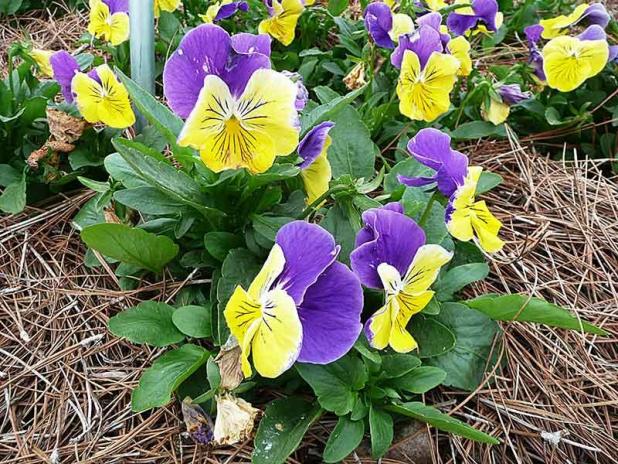
Pansies do well throughout a Louisiana winter.
—LSU AgCenter/Allen Owings
Get It Growing: Time to plant cool-season bedding plants
November is a great time to remove summer bedding plants and add cool-season plants to your flower beds.
Cool-season bedding plants thrive in the mild days and chilly nights we have here during fall, winter and spring. Most will easily tolerate temperatures in the low 20s or even teens with little or no damage. They will bloom in fall and winter, produce a tremendous display in the spring, then finally fade out in May as the weather gets hot.
Fall-planted cool-season bedding plants generally produce more spectacular displays in spring than spring-planted cool-season bedding plants.
Selecting bedding plants
Nurseries and garden centers offer a wide selection of cool-season bedding plants, and you can choose between transplants and seeds. Transplants are well-established, blooming-size plants that provide color to your garden right away. Some cool-season bedding plants are easy to grow from seed and may be sown now directly into beds where they will grow. They include alyssum, Johnny-jump-up, blue bonnets, calendula, annual phlox, nasturtium, sweet peas, larkspur and poppies.
Select cool-season bedding plants so that the colors are harmonious. When planted, colors should be grouped together in masses. Try not to use too many different colors in the same bed. The visual display in an area where a few massed colors have been used is generally more effective than a sprinkling of many colors, especially if the bed is to be viewed from a distance.
Cool-season flowers come in a variety of shapes and sizes, from the ground-hugging alyssum and lobelia to the towering hollyhocks and delphiniums. Plant heights should be considered when selecting and placing bedding plants into the landscape.
Proper light equals lots of flowers
Cool-season bedding plants will bloom best in well-drained locations that receive six hours or more of direct sunlight. Generally, the more sun they receive, the more they will bloom and grow.
Pansy, viola, forget-me-not, foxglove and nicotiana are probably the best choices for partially shady areas. Even they will not perform well in heavy shade but do best where they get at least a few hours of direct sun. Primroses and cyclamens will bloom well with little or no direct sun.
Don’t skip bed prep
Do a good job of bed preparation, which makes a tremendous difference in the performance of the plants. Remove any weeds in the bed and turn the soil to a depth of at least 8 inches. Spread a 2-to-4-inch layer of organic matter (compost, peat moss or aged manure), evenly sprinkle a light application of a general-purpose fertilizer over the bed and thoroughly mix them into the soil. Rake the bed smooth and you’re ready to plant.
Because they are quick, easy and give instant results, most gardeners favor the use of transplants. Plant transplants into a well-prepared bed, being careful to plant them at the same depth they were growing in the cellpack or pot. Space them properly. If you plant them too close together, they will be crowded and unhealthy. Planted too far apart, they will not fill the bed. Water newly planted transplants with a soluble fertilizer to get them off to a good start.
Proper care while they grow
As they grow, fertilize bedding plants occasionally following the directions of the fertilizer you are using.
Mulch your beds to prevent weeds, conserve moisture and provide some protection against freezing temperatures. Any mulch would be beneficial. Leaves, pine straw and pine bark are all suitable and attractive.
Although mulch will conserve moisture, additional water may be needed during dry periods. This will become increasingly important as the weather becomes warmer next spring. When you water, irrigate slowly over a long period to ensure a thorough job is done and the water penetrates deeply into the soil. Soaker hoses work great because they avoid wetting the flowers and foliage, but sprinklers may also be used.
Great cool-season bedding plants
Cool-season bedding plants can make your landscape an exciting and colorful place this fall, winter and especially next spring. Careful bed preparation and thoughtful planning when selecting plants will help ensure you are pleased with the results of your efforts.
Many cool-season flowers can be planted into the garden now. Check your local nurseries and garden centers for transplants or seeds. Some of the hardiest and most popular include alyssum, annual baby’s breath, annual candytuft, annual phlox, bachelor’s button, calendula, delphinium, dianthus, dusty miller, English daisy, forget-me-not, foxglove, geranium, hollyhock, larkspur, nicotiana, ornamental cabbage and kale, pansy, poppies, snapdragon, statice, stock, sweet pea and viola.
